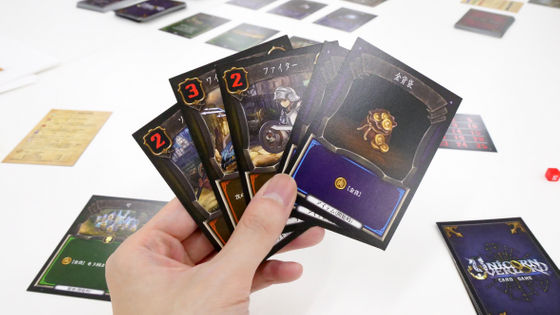A review of the board game 'Jewel Meister' where you collect jewels with simple rules and aim to reach the goal faster than anyone else. How to use special cards is the key to victory

GP Co., Ltd. has released a competitive game called ' Jewel Meister ' in which players create jewelry using gemstones, convert them into Meister points, and aim to reach the goal faster than anyone else. The game has simple rules, but the game is full of heated brain battles with pop-up 3D boards and other elements, so I tried playing it.
Jewel Meister
·table of contents
◆1: Jewel Meister packaging and contents
◆2: Preparing for the game
◆3: Actual gameplay
◆4: Summary
◆1: Jewel Meister packaging and contents
The Jewel Meister package looks like this.

The game is suitable for 2-4 players, with a play time of 20-40 minutes, and is recommended for ages 10 and up.

Inside the box were an instruction manual, a pop-up 3D board, special cards, reminder cards, gems, player pieces, jewelry tiles, and minecart tiles.

This is what the pop-out 3D board looks like when closed.

When you open it, the mine literally pops out in three dimensions.

There are 34 special cards in total.

There are 11 types in total.

There are 4 reminder cards to help you confirm what you can do on your turn.

There are 36 jewelry tiles in total, 17 of which have a brown background and 19 have a blue background.

The jewels come in four colors: red, yellow, blue, and green, and the player pieces come in four colors: blue, light blue, pink, and purple.

The trolleys are available in four colors.

◆2: Preparing for the game
Let's get ready to play the game. First, place your player piece at the start of the score track on the game board.

Jewels are randomly dropped one at a time from the top of the 3D board. They roll down the slide and stop at the bottom.

Choose the first player, and then each player, clockwise from that player, takes a gem from the bottom of the slide and places it in one of the three holes in their minecart.

Shuffle the special cards and deal one to each player face down. At that time, you cannot show your special cards to other players. Place the remaining special cards face down on top of each other. Then shuffle the jewelry tiles and distribute five to each player face down. Players check the tiles they have been dealt and select three of them. Place them face up under the minecart.
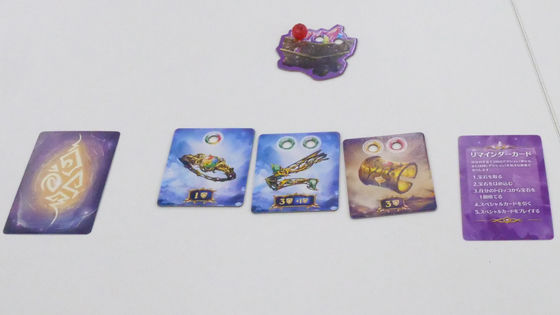
Place the remaining jewelry tiles face down along with the tiles that were not dealt, then place four tiles face up on top of the pile to create a market.

This is the setup for four players. When setting up, place the tiles according to the included setup diagram.

◆3: Actual gameplay
In Jewel Meister, players create jewelry using the gems they collect and convert them into Meister points. The first player to reach 20 points will be awarded the title of 'Jewel Meister' and become the winner.
Let's start the game. During their turn, each player can choose two of the following five actions: 'take a gem from the mine and put it on the cart', 'insert the gem on the cart into a jewelry tile', 'discard one gem from your cart', 'draw a special card', or 'play a special card'. This time, I chose 'take a gem from the mine'. I took one gem from the bottom of the mine.

Then place it in one of the holes on your minecart tile. A minecart tile can store up to 3 gems, and you cannot take any more gems.

If you choose 'Place a gem in the tile', you will take the gems from the cart and place them in the open holes of the jewelry tile in random order. Note that you can only place gems of the color shown on the tile.
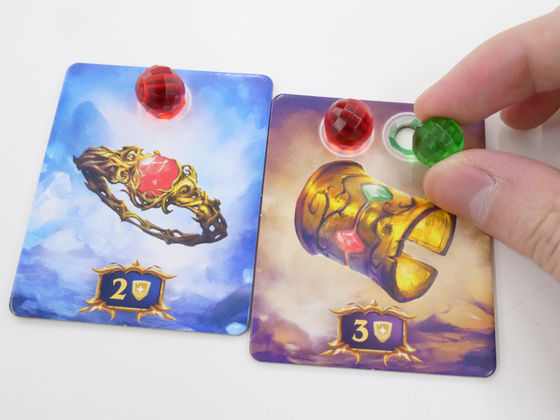
Some tiles also have rainbow-colored holes that you can place any colored gem into, but if there are multiple rainbow-colored holes, all of the gems on that jewelry tile must be the same color.
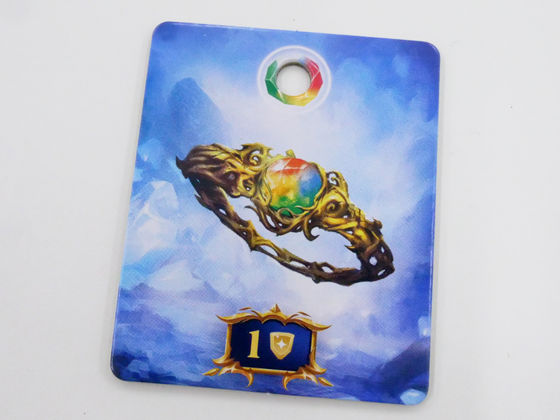
If you can fill a jewelry tile with the specified gemstone, you can convert it into 'Meister Points' equal to the number written on the tile. If it is a brown tile, it will be converted into Meister Points immediately. In this case, I was able to get 3 Meister Points.
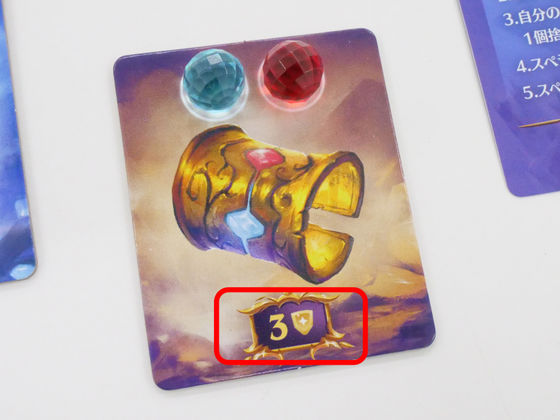
The converted tile is flipped over and placed in front of you, and the gem on it is returned to the top of the mine.
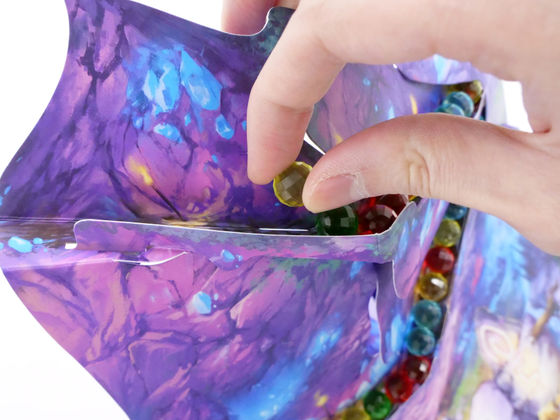
After converting the tiles, move your player piece forward by the number of Meister points you have acquired. In other words, move forward three spaces this time. After that, acquire new tiles from the market equal to the number of tiles you converted and place them in front of you. After that, replenish the number of tiles in the market with tiles from the deck so that there are four tiles in the market.
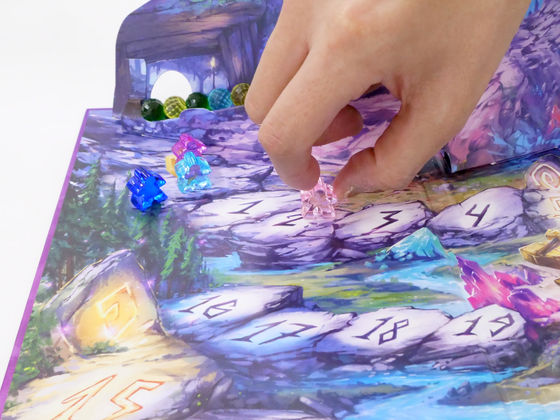
Brown tiles had to be converted into Meister points immediately, but blue tiles could be converted at any time. Multiple tiles with gems of the same color on them could be converted, in which case you could earn a set bonus in addition to the points written on the tile. The '+ XX' written on the tile is the set bonus points, so in the following case, you would earn a total of 9 points, including the 7 points for the two tiles combined, plus the 2 points for the set bonus.
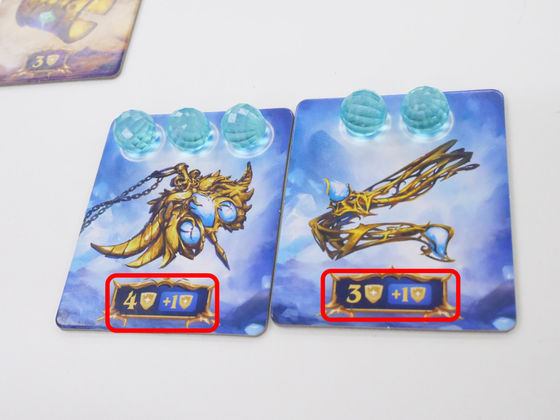
This allows you to move your piece forward in one go.

As the game progresses, the blue player quickly reaches 19 points and is close to reaching the goal.

The blue player's jewelry tile looks like this. He only needs to get one more red gem to reach the goal.
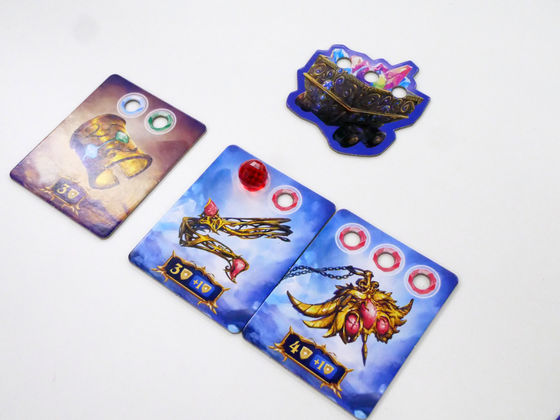
So the blue player activated a special card that allowed him to take up to two gems from another player's minecart and place them on his own minecart, and the player who had them take them would receive one point instead. He tried to steal the two red gems held by the purple player.

Wanting to stop this, the purple player played a card that can be played on any player's turn that 'negates the effect of a played special card.' This somehow prevented the blue player from winning on that turn. One of the fun things about Jewel Meister is how players read and respond to special cards.
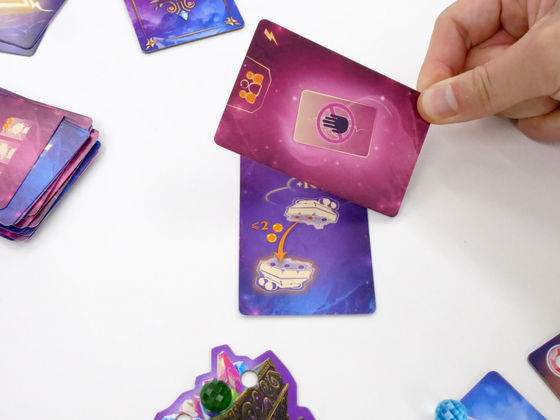
After a lot of offensive and defensive play, the blue player was the first to reach 20 points. This ended the game and the blue player won.
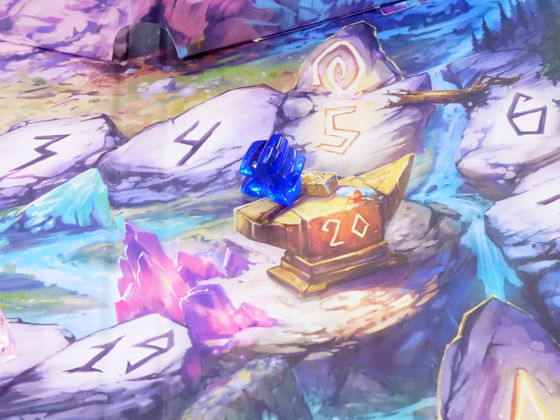
◆4: Summary
Jewel Meister is a simple game, but it is quite tactical, with special cards and timing to take jewels. Not only can you speed up by repeating the game, but one of the ways to enjoy the game is to find the best way to move your pieces.
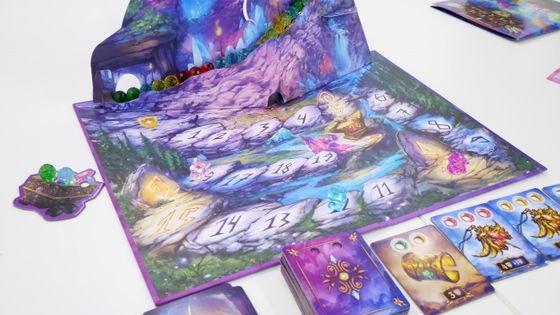
The price of Jewel Meister, which I played this time, on Amazon.co.jp is 3,380 yen including tax at the time of writing.
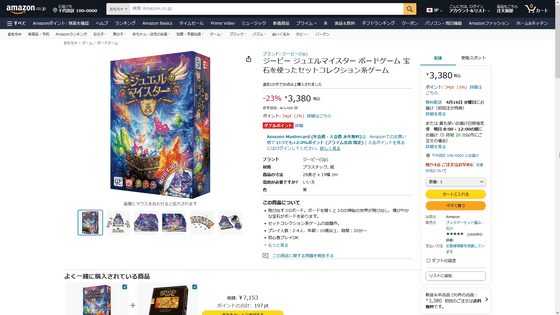
Related Posts:






